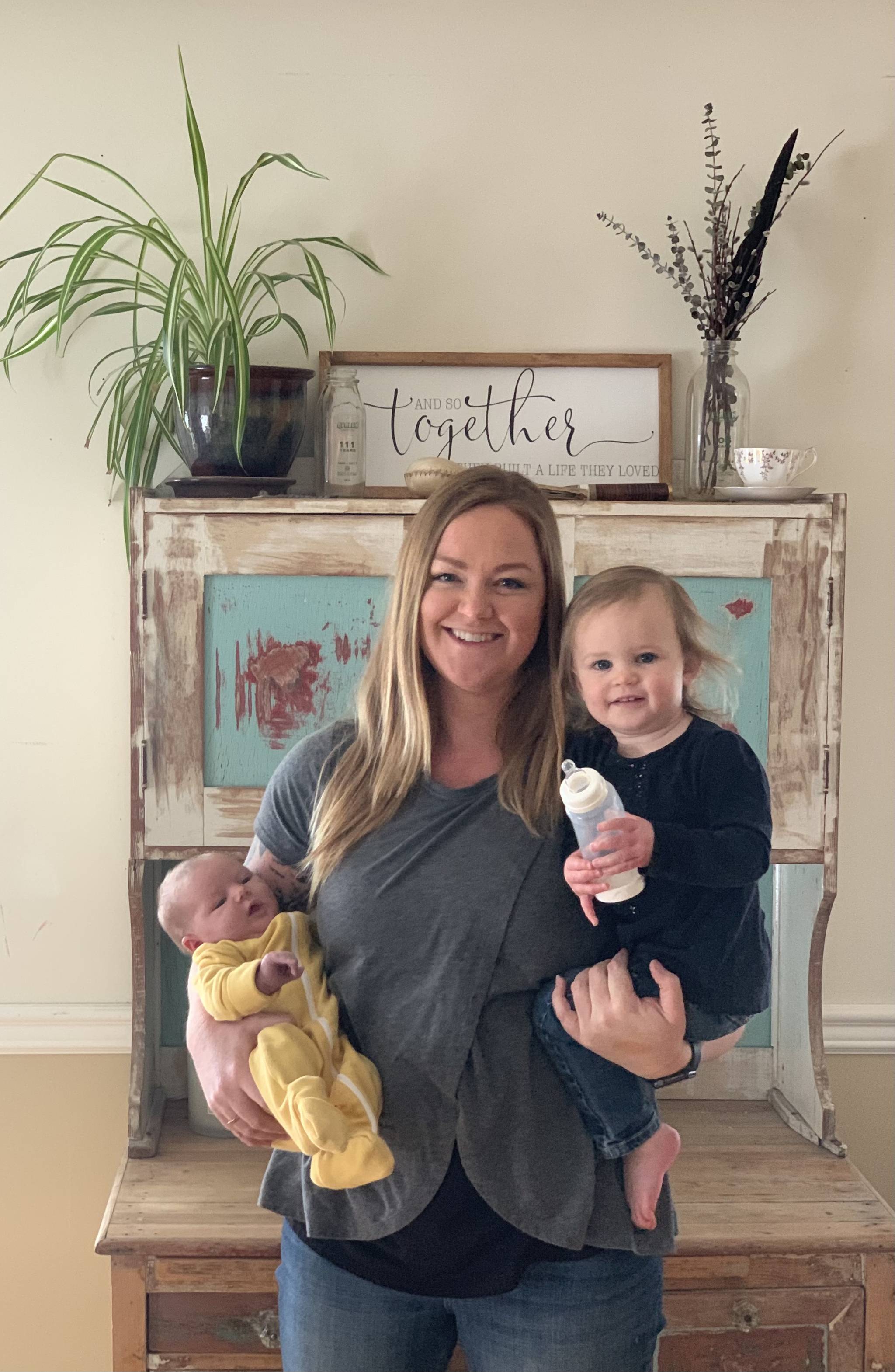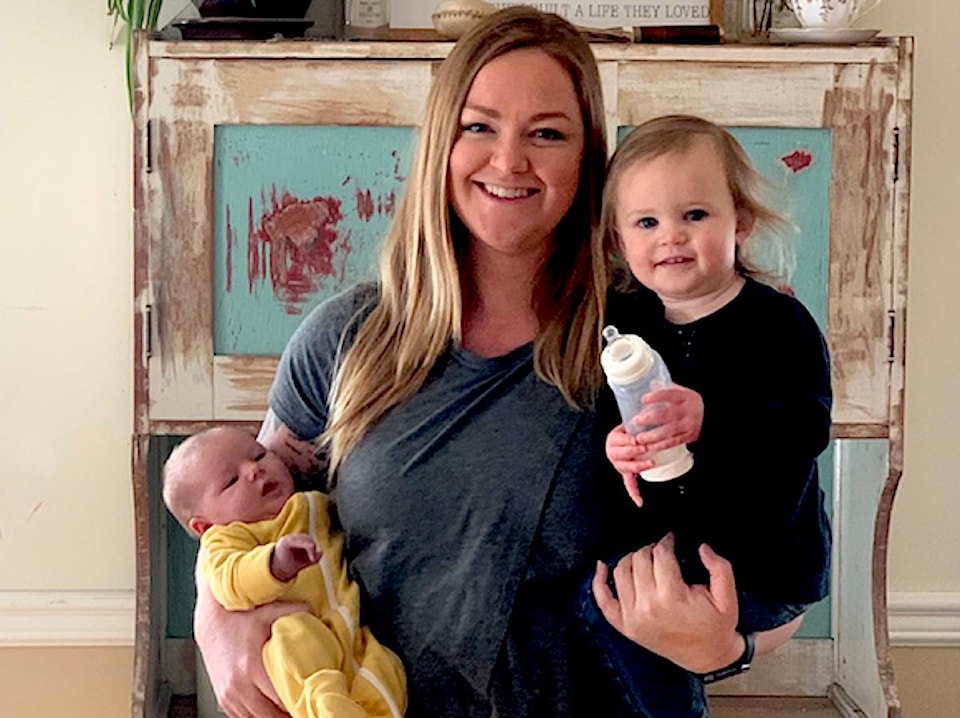Concern about the pandemic’s impact on hospitals made Sundre mother Dansya Curry more determined than ever to deliver her third child at home.
“It was a huge relief,” said Curry, when Baby Emerson was born in the family’s bathtub on Jan. 4, as planned.
Curry’s third pregnancy had gone a few days past the estimated delivery due date — making her “nervous” about the possibility of having to be induced in a hospital. This had happened with Curry’s second child, who was a couple of weeks overdue.
With shifting pandemic protocols, Curry wondered whether she would have to wear a mask during a hospital delivery? She also worried about whether her partner and sister would be allowed into the hospital to give her support during the birth?
As things worked out, her daughter Emerson was only a few days late and was delivered at the family’s Sundre home with the help of a midwife from West Country Midwives, from Rocky Mountain House.
Curry’s partner and sister were by her side. “It was a wonderful experience,” she recalled.
“Hospitals make me nervous, anyway,” admitted Curry, who also has an 11-year-old son who was delivered at home.
“Especially now, with the pandemic, I thought I would do anything to have my baby at home…”
Related:
-Women’s fears spark interest in birthing alternatives
-‘Magical time’ is tainted for some pregnant women
More central Alberta women are thinking along these lines.
Nicole Matheson, one of four midwifes with West Country Midwives of Rocky Mountain House, said demand for home births has doubled in the past year.
Instead of delivering 75 per cent of babies in hospital, and 25 per cent at home, her service is now seeing about a 50-50 split, she said.
While Matheson considers hospital deliveries to be very safe still, (she said expectant mothers do not have to wear masks in the delivery room, although their support person does), “I think women want to have a more controlled environment.”
With a home birth, a number of family members can be present, while hospitals are restricting visitors and usually limiting support to only one relative or friend, said Matheson.
Jennifer Bindon, of Prairie Midwives in Red Deer, said about 60 per cent of her client’s babies are still being delivered in hospital, compared to about 40 per cent who come into the world at home.
But she’s lately been answering more calls from women interested in home births because of the pandemic.
Prairie Midwives operates with seven midwives and cares for 250 to 280 families annually, yet can’t meet all the demand. Bindon said 20 to 30 women are on the waiting list.
Clients who are interested in delivering their babies at home are advised to read up on it. “Having a home birth is a very fluid decision that requires a lot of self-education,” said Bindon.
“It’s becoming more of a mainstream option because for most people it is a safe option.”
Bindon believes the greatest appeal is the comfort factor: “The environment is what they are choosing.”
Curry liked that nobody was intruding to offer her pain-relieving meds during Emerson’s home birth, as had repeatedly happened during her hospital delivery with Rowyn.
She also felt the midwife listened to what she wanted.
“She backed off and let me do my thing. The midwife would step in when needed, but it was a more intimate experience that was more about me and my partner, not me and my doctor…”
lmichelin@reddeeradvocate.com
Like us on Facebook and follow us on Twitter

